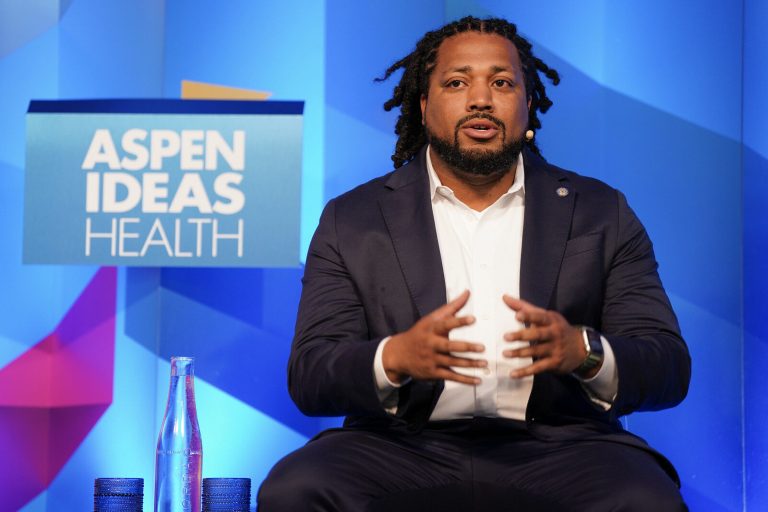ASPEN, Colo. — Leading experts on the gun violence crisis called for expanded data collection, increased federal research funding and a prioritization of community building as important next steps to stem gun deaths and improve public health.
Gregory Jackson, deputy director of the White House Office of Gun Violence Prevention, said at Aspen IDEAS Health on Friday that gun violence is the No. 1 cause of death among young people and has been the leading cause among Black youth since 2006.
But the U.S. is lagging behind on various mitigation measures that would lessen the impact on public health, he said.
“I want to emphasize that this is the least studied of the top 30 causes of death,” Jackson said, adding that more research is being done on sepsis in young people. “It's a tragedy how little we know, but when we start investing in strategies with just the little bit of what we do know, we're starting to see real results.”
“When you look at the dollar amount per death in America, it's embarrassing how little money we put into this problem compared to cancer and other issues,” Jackson said, adding that safe gun storage and community violence intervention programs are the two biggest steps to reducing youth violence.
Meghan Ranney, dean of the Yale School of Public Health, Michael Dowling, president and CEO of New York health care provider Northwell Health, and Jackson all praised the bipartisan Firearm Safety and Mental Health Act of 2022 for allowing researchers to unlock early results of public health tools. But Ranney said data collection efforts are “just scratching the surface” at this point.
“We can measure the cows until they come home, but that won't change the patterns of injuries and deaths,” said Ranney. “But without the data, how do we know if what we're doing is working?”
“At this point, at least on the government side, we don't even know how many people have been injured by firearms,” Jackson said.
Funding
After eliminating this type of funding for more than two decades, Congress included explicit funding for gun violence research through the Centers for Disease Control and the National Institutes of Health in the fiscal year 2020 spending bill.
The federal government has since spent $25 million on each of the agencies, a figure boosted by the involvement of universities, philanthropists and health systems, Ranney said. He called on the U.S. Surgeon General to issue a report on gun violence to draw attention to the issue, similar to other major health problems.
Dowling said the federal government needs to invest more broadly in reducing gun-related suicides. He praised the funding provided in the 2022 legislation but said overall funding for mental health remains “really, really, very minimal.” But he also warned against putting all gun violence under the mental health umbrella.
Supreme Court ruling
Friday's panel discussion took place on the same day that a shooting outside a grocery store in Fordyce, Arkansas, left two people dead and many injured, according to reports.
Also on Friday, the Supreme Court, in U.S. v. Rahimi, overwhelmingly upheld a law banning people subject to domestic violence-related restraining orders from owning guns.
Ranney said domestic violence homicides are the No. 1 cause of homicide deaths among women, with the majority of those deaths involving firearms. Domestic violence is also linked to other forms of firearm deaths, including suicide and mass shootings.
“I am very pleased that the Supreme Court has upheld the current rules that allow firearms to be confiscated from people arrested under domestic violence restraining orders,” she said.
Jackson also called the decision “very significant” and highlighted the connection between access to firearms and domestic violence.
“Without this decision, we would have had a lot of tools taken away from our toolbox,” Jackson said, pointing to a bipartisan 2022 bill that would have clarified language defining a dating partner and made gun trafficking a federal crime. Domestic violence perpetrators are most likely to obtain their guns through unauthorized dealers.
“That's the primary source of information so we can determine how these guns get into the hands of domestic violence perpetrators,” he said.

